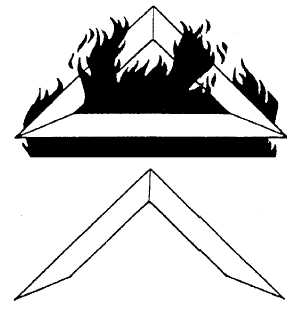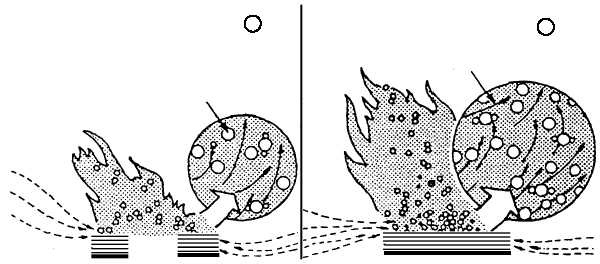CHAPTER 12
CRASH RESCUE AND FIRE FIGHTING
INTRODUCTION
Fire fighting is a highly technical profession. Fire
fighting in and around crashed aircraft is a highly
specialized field of fire fighting. An individual willing
to become a fire fighter must process the following
qualities:
alertness,
courage,
dedication,
agility,
physical strength, and the ability to be an exacting team
worker.
The primary duty of the fire fighter is saving life. If
there is a fire aboard an aircraft with ordnance on board,
there is potential for loss of life.
If an ordnance
cook-off occurred, the top priority would be to cool off
the ordnance, simultaneously lay a personnel rescue
path, and to extinguish the fire.
During frequent drills and training sessions, it is
important for you to actually use all equipment,
extinguishing agents, and tools so you will learn their
capabilities and limitations.
THE CHEMISTRY OF FIRE
LEARNING OBJECTIVE: Identify the four
elements necessary to produce fire, and
recognize the characteristics associated with
the different classes of fires. Recognize the
characteristics
of
the
five
different
extinguishing agents.
Fire is the most common form of chemical
reaction. The process of fire may be regarded as a
chemical triangle (fig. 12-1). The three sides consist of
fuel (combustible matter), heat, and oxygen.
After
extensive research, the presence of a fourth element has
been identified.
It is the chemical chain reaction
(fig.12-2) that takes place in a fire that allows the fire to
12-1
OXYGEN
FUEL
OXYGEN
HEAT
HEAT
NO FIRE
Anf1201
Figure 12-1.—Requirements for combustion.
VAPOR
FUEL
INCREASED MOLECULE
CHAIN REACTION
CHAIN REACTION
OXYGEN
ANf1202
A
B
Figure 12-2.—Chain reaction.



